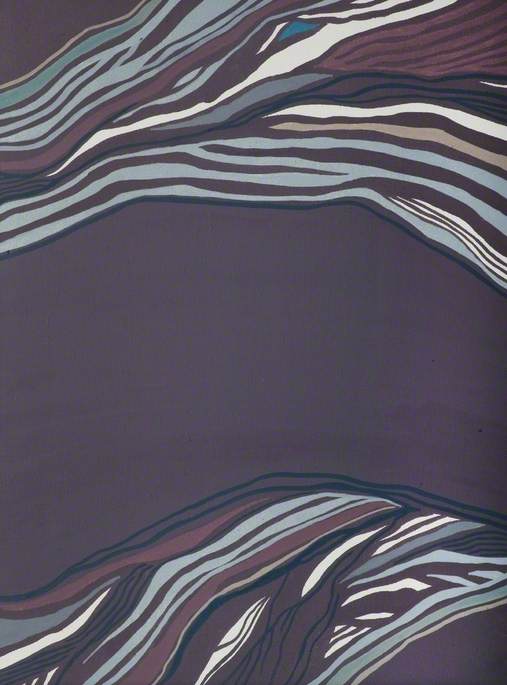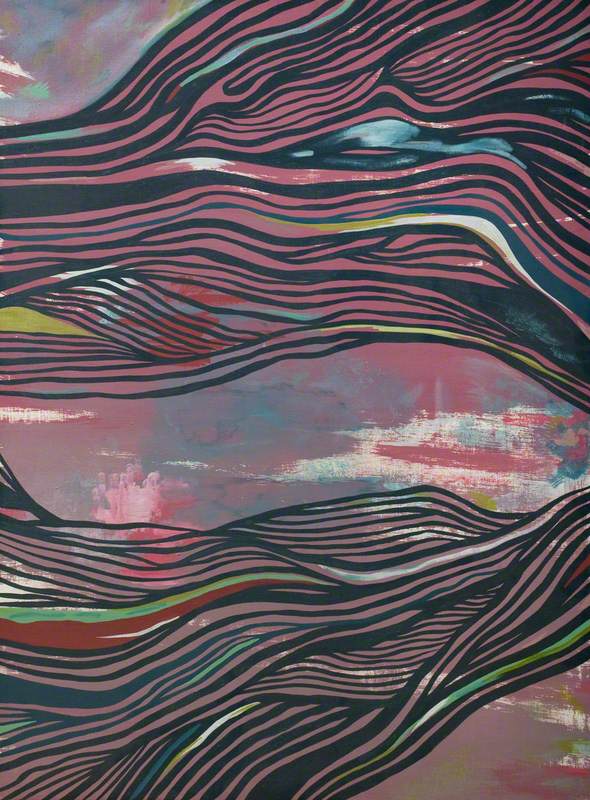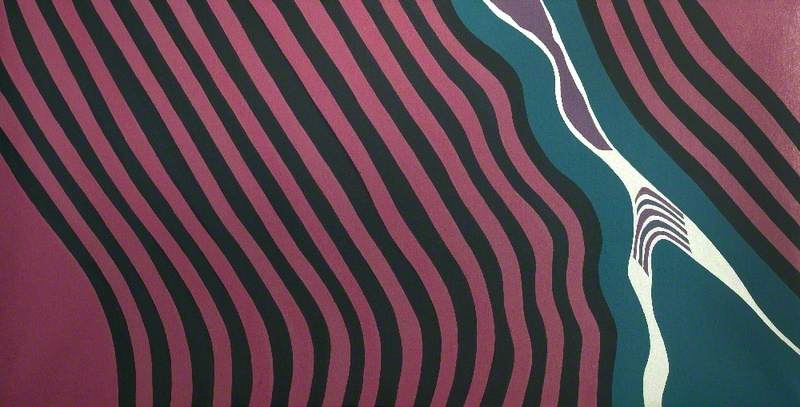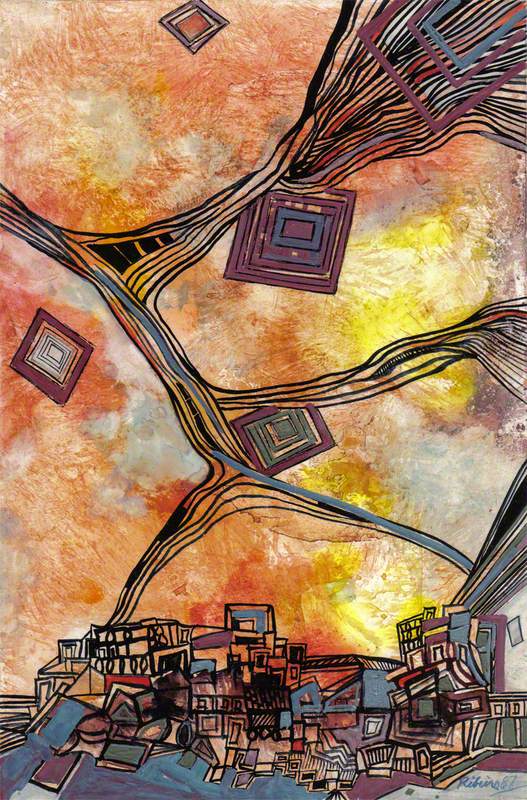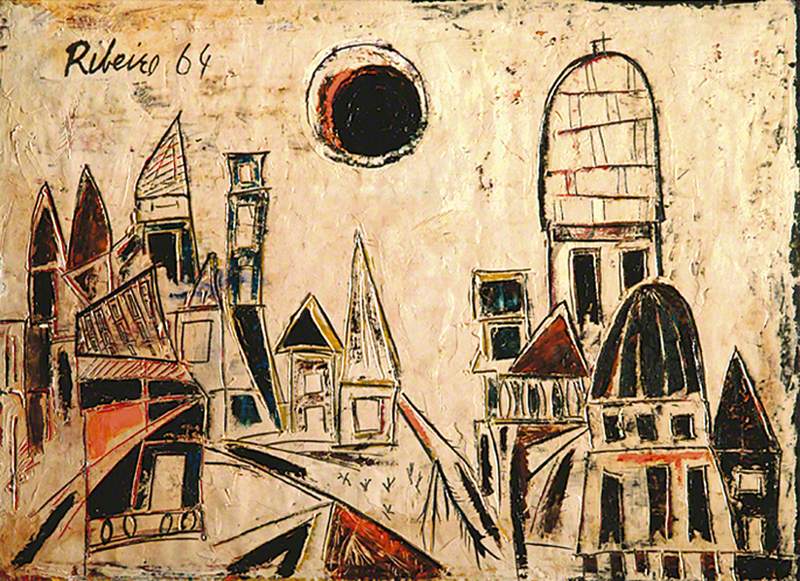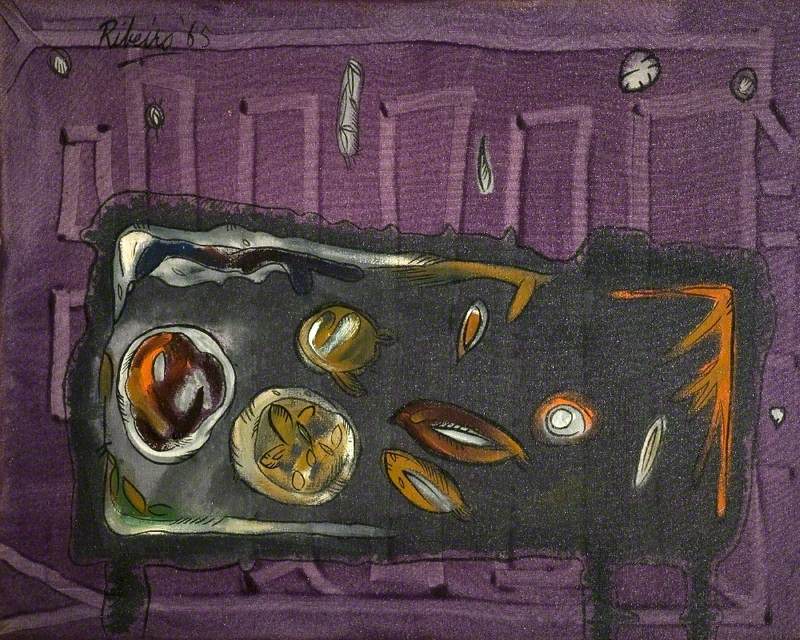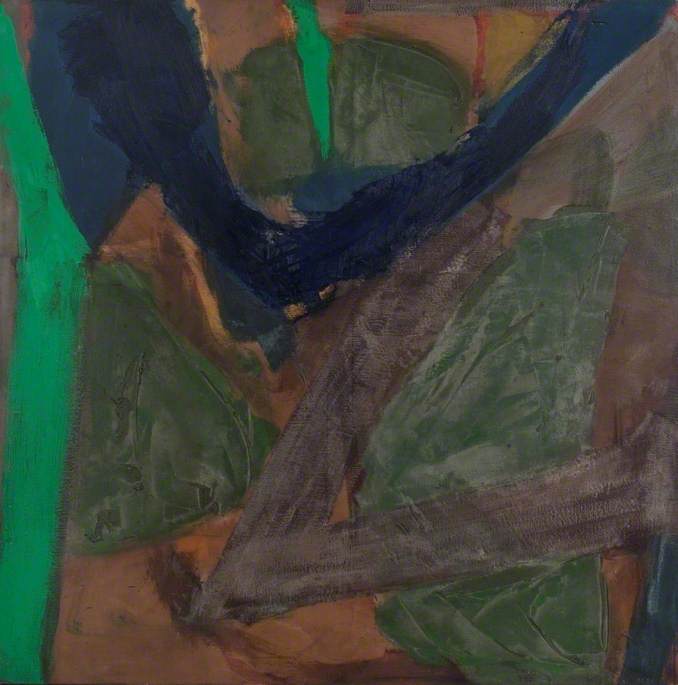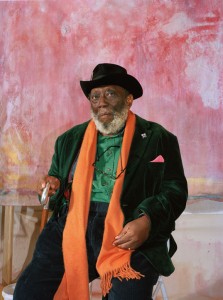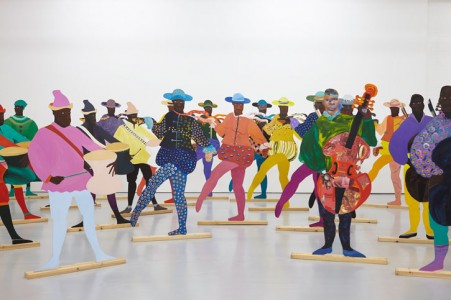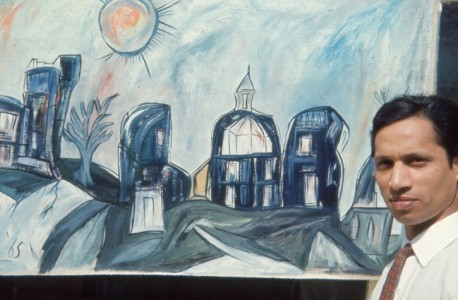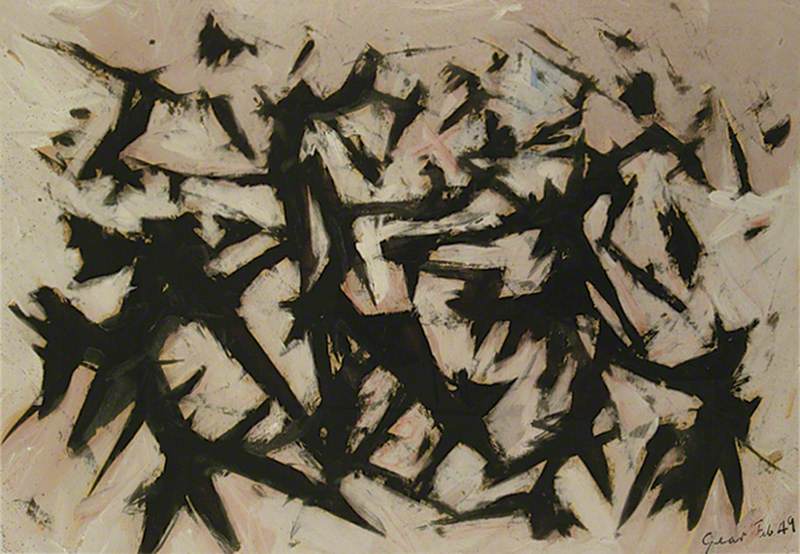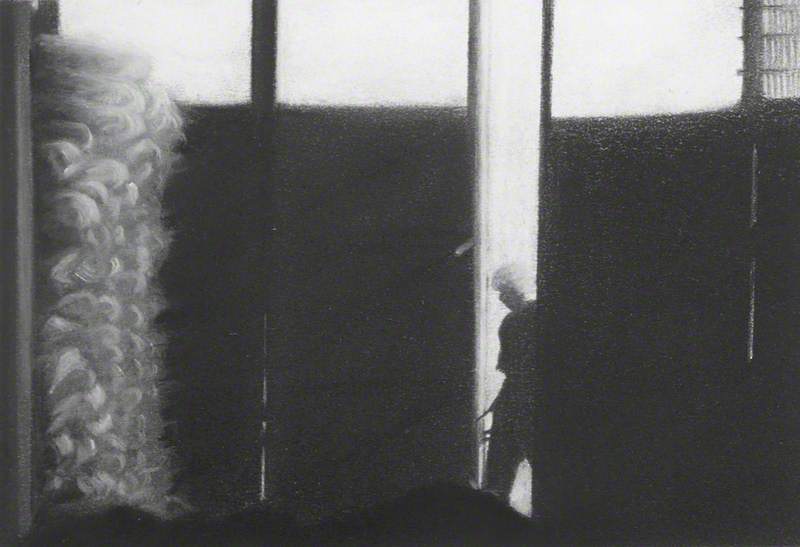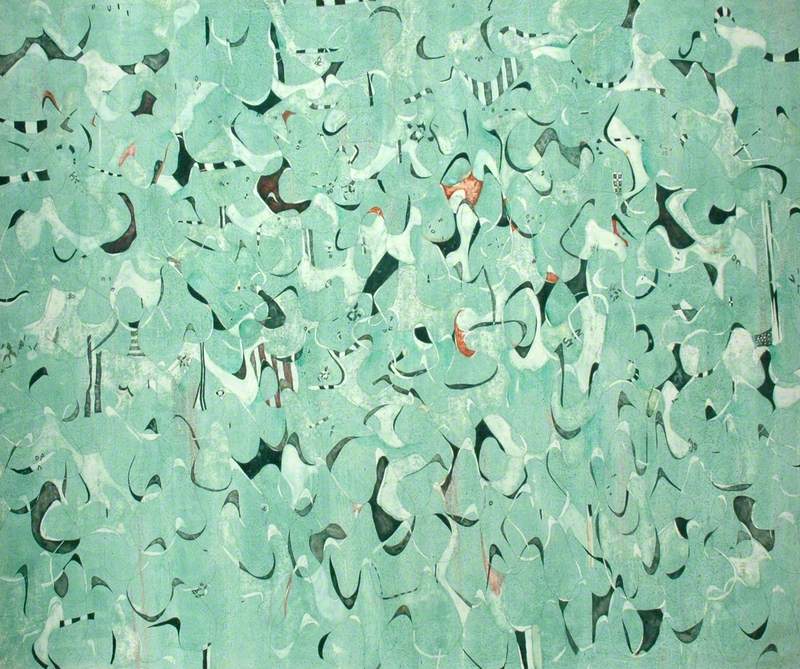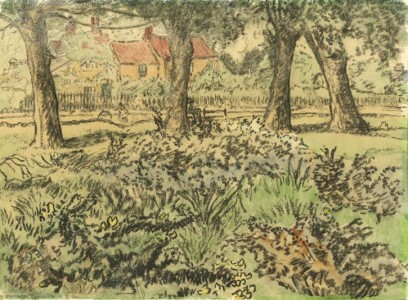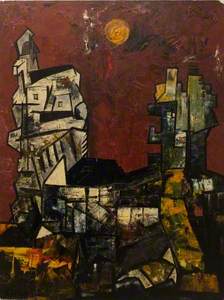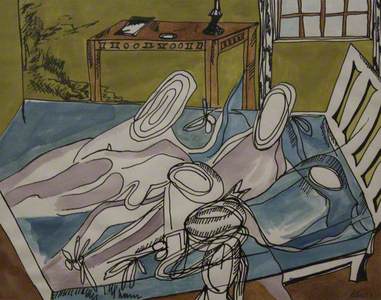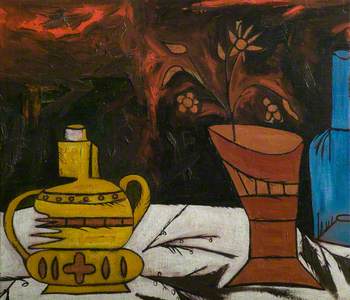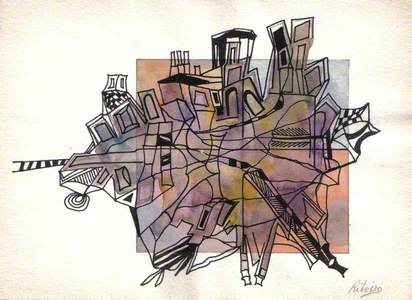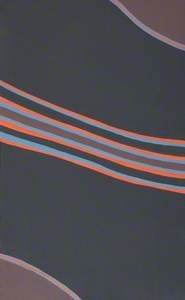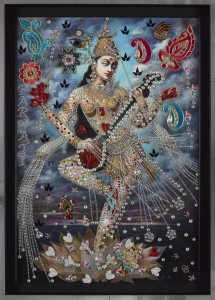Writing to his artist son Lucien in 1889, the great French Impressionist Camille Pissarro lamented how his old compatriot Alphonse Legros was producing works that were 'laboured, dull, rather black in tone' and 'too imitative.' Legros as a young man in France had been a challenging realist and exhibitor at the Salon des Refusées. However, since settling in England and in 1876 becoming the second Slade School professor, he was in his fifties producing pictures in which Camille no longer found 'the whiplash of originality.'
Artists in later life do sometimes get stuck in a stylistic rut. It is a charge that could never be made against another such expatriate, Lancelot Ribeiro – ever alert to new artistic developments in Britain and abroad – who innovated excitingly until his death at 77 in 2010.
Ribeiro continued to experiment with his art despite the fact that towards the end of his life he was largely ignored by British galleries, prompting him to look abroad to find new audiences in Germany, Switzerland and his native India. Now a new ‘Retracing Ribeiro’ project funded by the Heritage Lottery Fund and exciting acquisitions by the British Museum and Victoria & Albert Museum are set to re-evaluate Ribeiro as one of the most innovative Indian artists of the last half-century living in Britain.
Ribeiro was born in Bombay (now Mumbai) in 1933, his older half-brother becoming the artist F. N. Souza. Both would be influenced by the architecture of Goa, the former Portuguese enclave where Souza was born, the iconography of Roman Catholicism and Bombay’s cosmopolitan atmosphere. That helped in 1947 to spawn the Progressive Artists Group, the most influential in the sub-continent until then, in which Souza was a leading member. It helped to inspire Ribeiro. Intended to be an accountant he joined Souza in London in 1950, but soon abandoned that idea, attending classes at St Martin’s School of Art.
After a brief service in the Royal Air Force from which he was released on compassionate grounds, he returned to India in 1955 to work in life insurance, but aspired to being a published poet and began to paint, becoming a professional painter by the end of the decade. His first solo show at the Bombay Artist Aid Centre in 1961 – landscapes, townscapes, portraits and still lifes using primary colours and strong black outlines – gained generous press coverage and was an instant success.
An important commission for a 12-foot mural for Tata Iron and Steel, a series of successful solo exhibitions and inclusion in the 1960–1961 'Ten Indian Painters' exhibition that toured internationally meant that within a few years Ribeiro had an enviable reputation in India. Souza had remained in Britain, achieving international interest in his pictures, and Ribeiro joined him in mid-1962. For a time, until Souza moved to America, they lived in the Camden area of north London, to become Ribeiro’s permanent home. However, the 1960s were not auspicious for an expatriate artist to be launching a career into an art market with few galleries interested in contemporary work. A few enlightened dealers, such as Nicholas Treadwell, did provide opportunities for their work to be shown and bought.
Realising that other overseas painters were like himself struggling to find outlets, Ribeiro was in 1963 a founding member of The Indian Painters Collective. One of its early triumphs was in 1964 to get the Indian High Commission to host the exhibition 'Six Indian Painters', opened by Britain’s first Arts Minister, Jennie Lee. However, it received minimal publicity. This was one of a number of dogged initiatives over the years to try to promote interest in the work of artists from the sub-continent, only now being slowly realised.
Ribeiro was a man of questioning mind, with wide artistic and scientific interests. He worked fast and, finding traditional oil paints inadequate for his needs and seeking an alternative that would deliver at speed a similar impasto, he was responsible for what his great supporter, Professor Patrick Boylan, has called 'one of the most significant advances in artistic technique of the twentieth century', namely polyvinyl acetate (PVA)/acrylic. It called for years of experiment by Ribeiro and is now in widespread commercial production, but his pioneering work has received little credit and during his lifetime no financial recompense.
Although over the years Ribeiro was represented in many group shows and had solo exhibitions in Britain and abroad including two retrospectives, he lacked a West End gallery to promote him. This is a role now pursued by the Grosvenor Gallery, which took three exhibitions to India and organised one in London in 2014 and 2015, after Asia House in the capital held a posthumous retrospective in 2013.
Furthermore, the year-long ‘Retracing Ribeiro’ project was launched with an exhibition at Burgh House Museum, Hampstead, from October 2016 to March 2017, reflecting Ribeiro’s life in the area and his efforts, as part of 'Indian Artists UK', to bring a taste of Asia to Burgh House in 1980. As part of both the 2016 Asian Art in London week and 2017 UK-India Year of culture, the programme included events at the British Museum and Victoria & Albert Museum, unveiling their recent iconic Ribeiro acqusitions.
David Buckman, art historian and author of Lancelot Ribeiro: An artist in India and Europe, Francis Boutle Publishers, 2014

